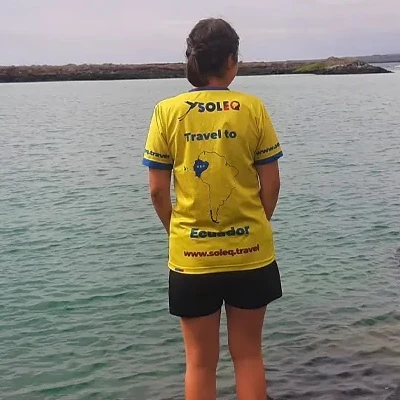
In the first part of our series on the flora and fauna of the Galapagos Islands we already introduced you to the animal eponym of the islands: The Galapagos giant tortoises. As you probably guessed, the tortoise is not the only species that inhabits these diverse islands.
Another species that calls the Galapagos home are the numerous species of iguanas. These can be seen both on land and in the water. What is special about the marine iguanas living on the Galapagos islands is that they are the only ones in the world. This means there is no other place on our planet with iguanas that seek their food in the water.
The basic color of marine iguana is black, which has the biological background that the animals need to warm up quickly after returning to land. Young animals have a bright-colored stripe along the back.
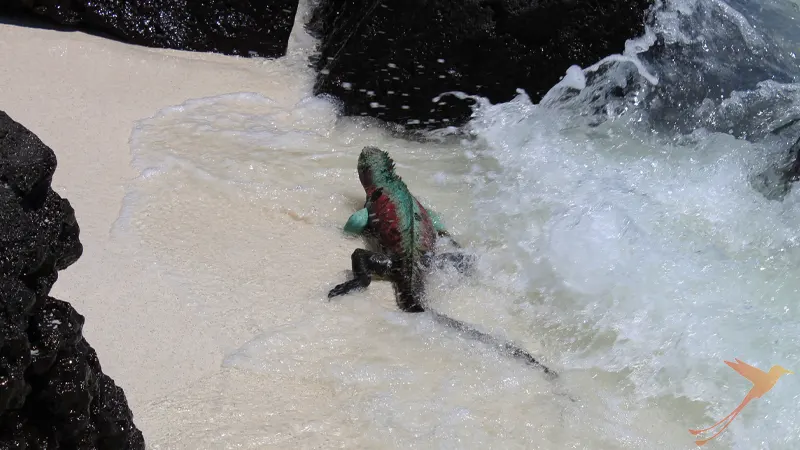
It is also interesting to note that the coloration of iguana change with the seasons; it ranges from red to gray to green. In addition, depending on the habitat and population, you can see color differences between the different species of iguanas. They also vary greatly in size. The largest iguanas live on the islands of Isabela and Fernandina, while the smallest lives on Genovesa. In total, there are 6 subspecies of marine iguanas, each inhabiting a different Galapagos Island. In addition, the female and male specimens differ greatly. The latter can grow up to 130 cm long, while their female partners are only about 60 cm. They grow up to 11 kg in weight. The maximum life expectancy is 30 years.
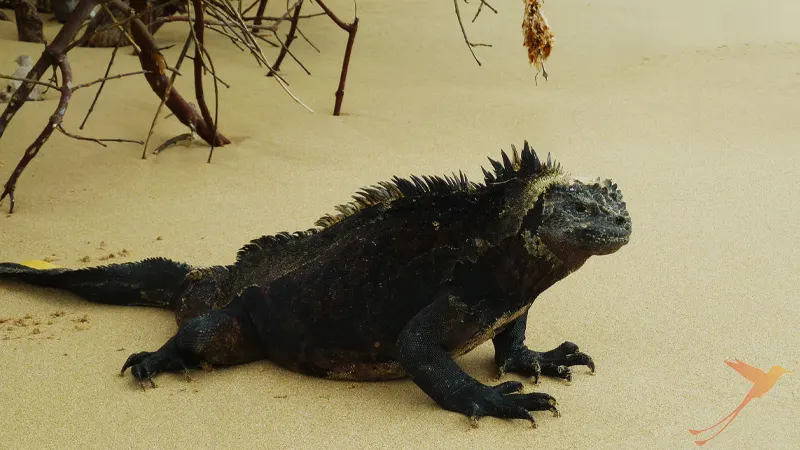
Habitat, Diet and Reproduction
Marine Iguanas are cold-blooded animals, which means that their body temperature always corresponds to the external temperature (and not, as for example with us humans, there is always a constant temperature of about 37° Celsius). Iguanas get energy both from their food and from the sun.
While feeding in the water, the iguanas’ body temperature drops by about 10° Celsius. They also consume energy through the lower water temperature. For this reason, they have a kind of energy saving mode. This mechanism lowers the heart rate by up to 50% when the marine iguanas dive into the water. Another method to save energy is to warm each other up. However, marine iguanas tend to be solitary, so warming by lying close together tends to happen on cold days and nights with low temperatures. During the day, iguanas prefer basking alone.
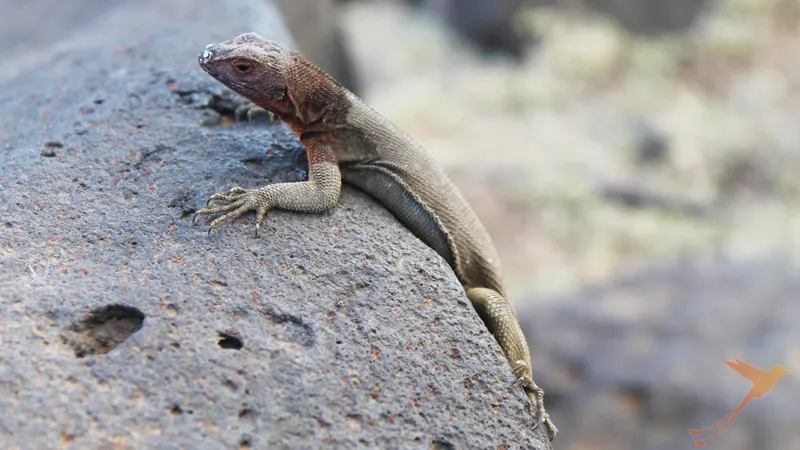
Even though the marine lizards are solitary, they live together in large populations on all the islands, but especially on Isabela. They can be found all year, mostly on the rocky coasts and in mangrove stands. They are also the only lizard species in the world that forages for food in the water during 45-minute dives. Mainly, it feeds on marine algae and seaweed. The diet can also contribute to the discoloration of the scales of the Galapagos marine iguanas, providing a great play of color. The salt that is involuntarily ingested through the diet is filtered in the blood vessels and excreted through the glands on the nostrils.
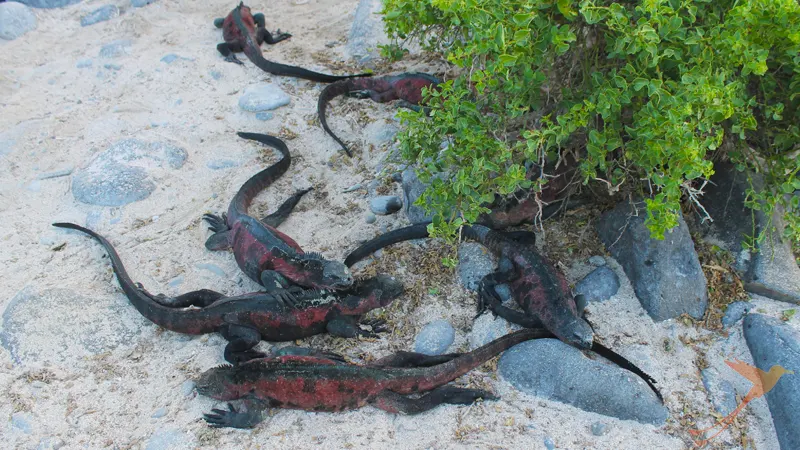
Females are sexually mature at 3–5 years of age, males at 6–8 years of age. For mating, male marine iguanas mark their territory and defend it against other male comrades. The goal is to gather as many female sea lizards as possible in the respective territory, so that they can choose between female partners. To reproduce, the iguanas dig nests near the sea and lay one to six eggs each. It takes 89–120 days for the young to hatch.
Endangerment
The climatic phenomenon “El Niño”, which means, the occurrence of unusual ocean currents, causes seasonal decreases in the population. Domestic cats and dogs also pose a threat to the young. Primarily because the cold-blooded animals are immobile after diving, so they cannot defend themselves, hide, or move quickly until they warm up. Also, because of the limited space in Galapagos, the animals are considered endangered species. However, according to estimates from the Charles Darwin Research Station, there are still about 100,000 marine iguanas living in the Galapagos and there are laws in place in Ecuador to help fully protect the iguana species.

During our tours in the Galapagos Islands, you can also marvel at these unique animals. Our cruise ships and yachts will take you to great locations so you can see these wonderful marine iguanas up close. We also offer regular last-minute tours to the Galapagos Islands and can combine your trip with other very interesting places within Ecuador. As you may know, not only the Galapagos Islands, but also the Amazon rainforest, the coast and the highlands are part of the small, yet diverse and worth seeing country of Ecuador.







